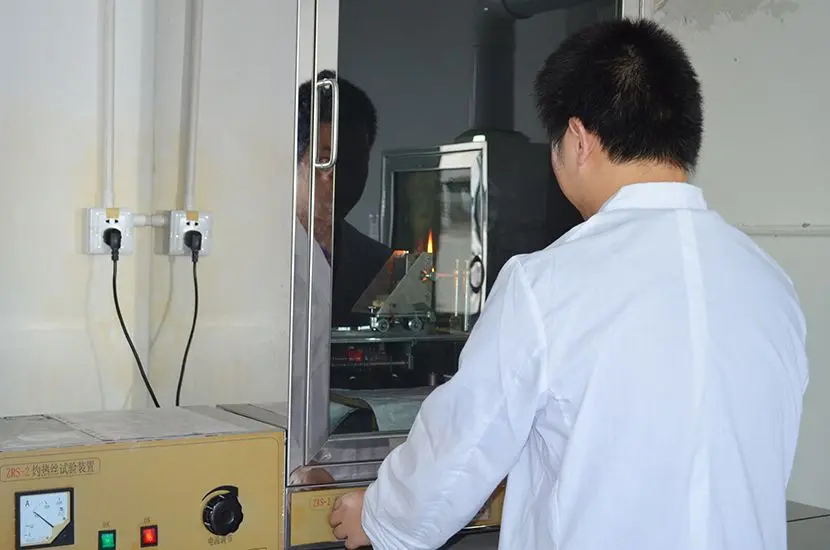
EN50689 Consumer Laser Standards Testing
Introduction to EN50689 Standard
EN50689:2021 is a European standard titled "Safety of Laser Products — ParticULar Requirements for Consumer Laser Products".

This standard aims to protect consumers from potential radiation hazards associated with laser products, particularly when operated by untrained users.
Primary Objectives and Applications of EN50689
Protection Target: Designed to safeguard general consumers, especially those operating laser products without professional training.
Scope:
Applies to laser products intended for use by ordinary consumers or products that may come into contact with consumers during operation. Examples include:
- Robotic vacuum cleaners
- Laser TVs
- Laser printers
Exclusions:
Does not apply to:
- Consumer laser products designed to project laser radiation (wavelength range 380 nm to 780 nm) onto the retina, such as VR glasses.
- Laser products intended solely for professional use.
- Laser-poweRED toys.
- Specific cosmetic and beauty laser devices.
Implementation Date:
- Published: November 30, 2021
- Mandatory: September 27, 2024
Key Requirements of EN50689
1. Product Classification:
Laser products are classified based on safety risk, including:
- Class 1: Lowest risk
- Class 2
- Class 3R: Moderate risk, but hazards can be mitigated with proper warnings and safety measures
2. Safety Design:
Products must be designed to ensure no harm to eyes or skin under normal or reasonably foreseeable misuse conditions.
3. Labeling and Instructions:
- Warning labels and user instructions are mandatory.
- For outdoor-use products, instructions must specify how to prevent laser exposure to others.
4. Emission Controls:
- Laser emission indicators must be described.
- Control specifications must ensure lasers are not emitted accidentally.
5. Specific Product Requirements:
- Certain products, such as laser pointers, have stricter guidelines.
- For example, laser pointers cannot be classified as Class 3R, with a maximum classification of Class 2.
Can EN50689 Consumer Laser Standards Be Applied Alone?
To address this question, consider the following points:
1. Applicability:
- EN50689 is an EU standard for consumer laser products. If your product is not entering the EU market, compliance with EN50689 is unnecessary.
2. Product Type:
- EN50689 applies only to consumer laser products. Non-consumer laser products do not require EN50689 compliance.
3. Definition of Consumer Laser Products:
- Products accessible and usable by the general public are typically considered consumer laser products.
- Professional equipment intended for general consumers should also comply with EN50689.
4. Relationship Between EN50689 and EN60825-1:
- EN50689 is a supplementary standard to EN60825-1, the EU’s general standard for laser products.
Key Points:
- EN50689 cannot replace EN60825-1 and cannot be applied alone.
- Consumer laser products must first comply with EN60825-1 and then undergo EN50689 testing for additional compliance.
- For non-consumer laser products, only EN60825-1 compliance is required.
Conclusion:
For consumer laser products entering the EU market, compliance with both EN60825-1 and EN50689 is mandatory.
Summary
If your product is a consumer laser product and needs to enter the EU market, ensure:
1. Compliance with EN60825-1.
2. Supplementary compliance with EN50689.
By adhering to both standards, your product will meet the EU's safety requirements for consumer laser products.
We hope this summary of the EN50689 EU Consumer Laser Product Standard is helpful to you!
Email:hello@jjrlab.com
Write your message here and send it to us
 What Are the Testing Items of California Propositi
What Are the Testing Items of California Propositi
 E-Cigarette EU TPD Testing
E-Cigarette EU TPD Testing
 Testing Certification for E-cigarettes Exported to
Testing Certification for E-cigarettes Exported to
 What is Amazon US CPC Certification?
What is Amazon US CPC Certification?
 UK Toy Safety Regulation Standard EN 71-13
UK Toy Safety Regulation Standard EN 71-13
 What is EU UFI Registration?
What is EU UFI Registration?
 EU UFI Registration for E-cigarette E-liquid
EU UFI Registration for E-cigarette E-liquid
 How to get the MSDS Report for Electronic Cigarett
How to get the MSDS Report for Electronic Cigarett
Leave us a message
24-hour online customer service at any time to respond, so that you worry!




